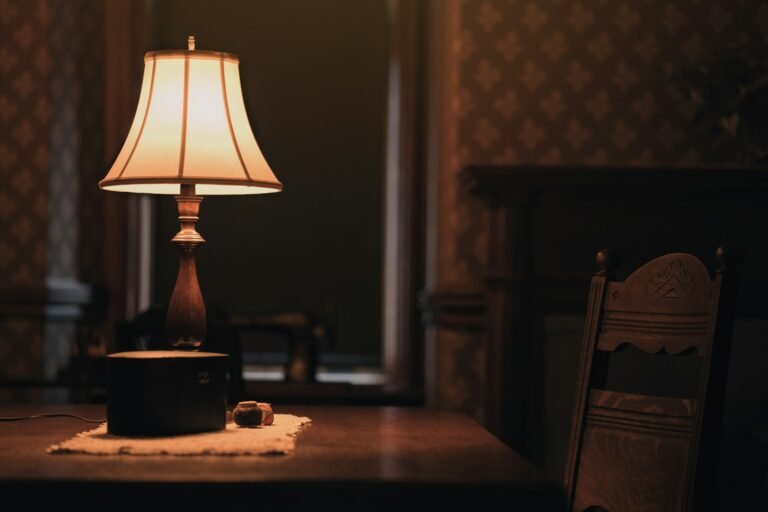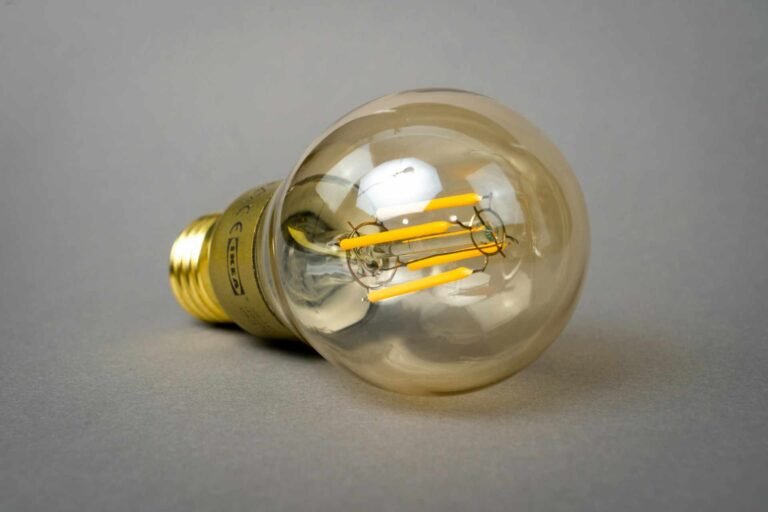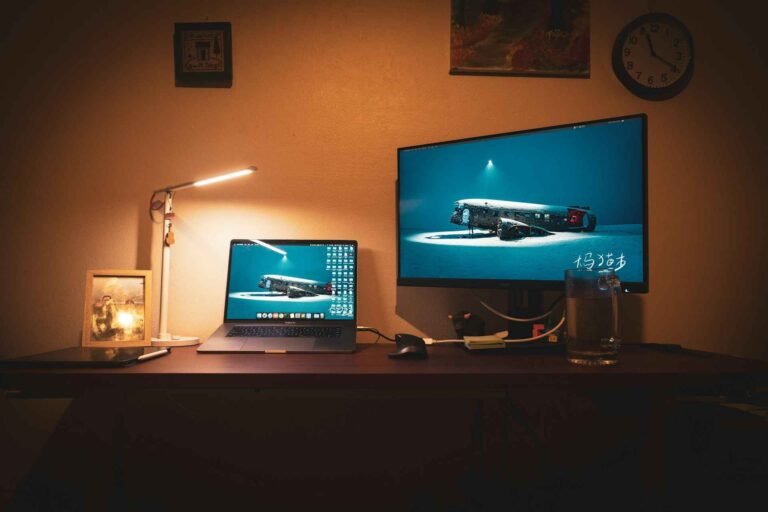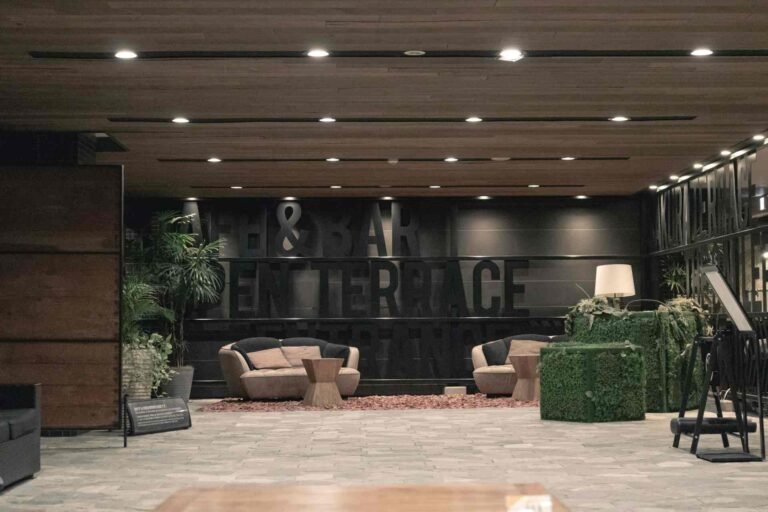Cool Light vs Warm Light: Choosing the Right Lighting for Your Space
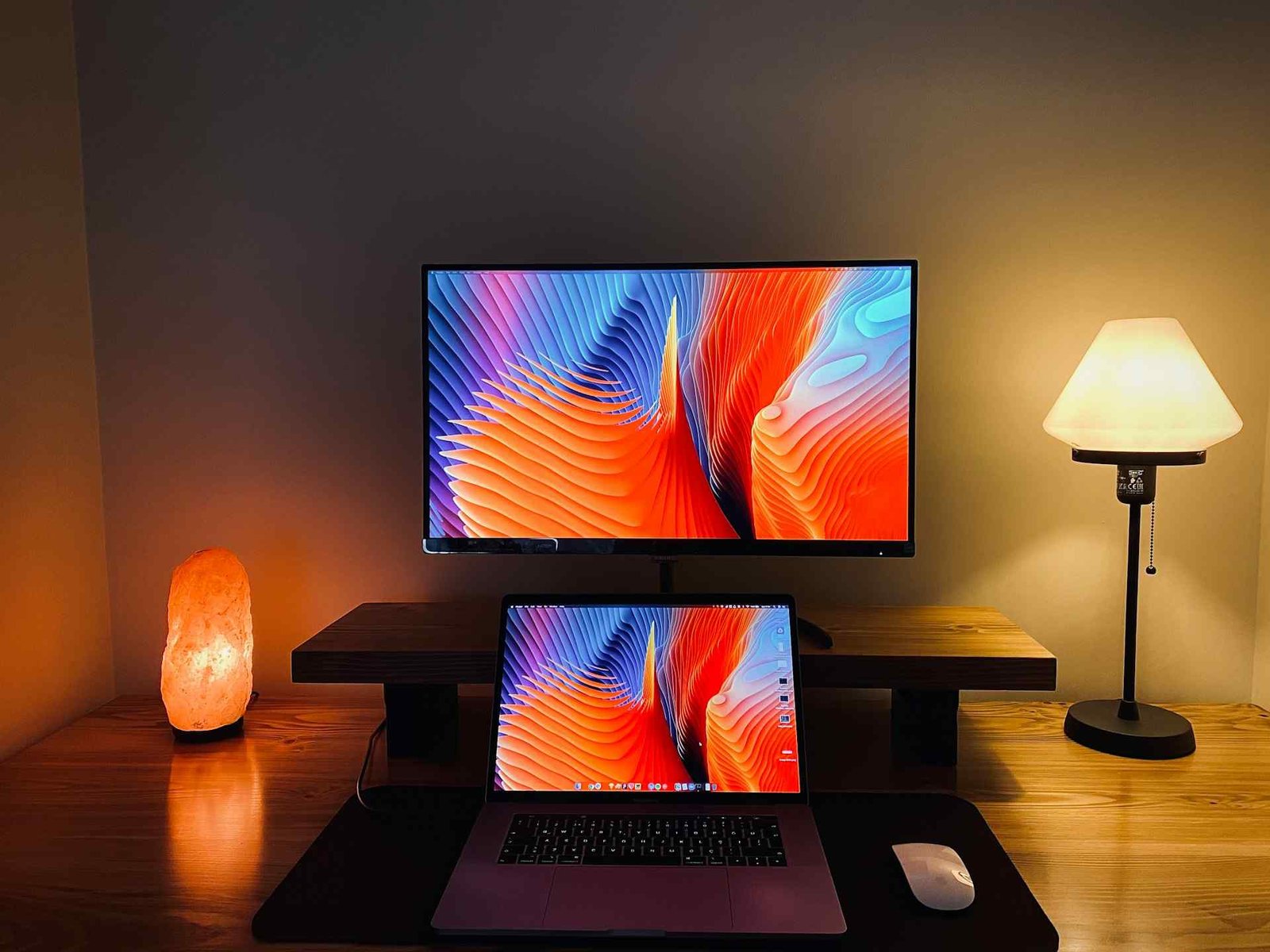
Ever found yourself squinting at your desk, wondering why your workspace feels either too harsh or too cozy to actually get work done? The difference between cool light and warm light isn’t just about personal preference, it’s about creating the perfect environment for whatever you’re trying to accomplish.
Whether you’re setting up a home office, upgrading your desk setup, or simply trying to figure out why your current lighting makes you feel like you’re either in a hospital or a romantic restaurant, we’ve got you covered. Let’s dive into the world of lighting temperatures and help you make the right choice for your space.
What’s the Real Difference Between Warm and Cool Light?
The difference between warm light and cool light comes down to color temperature, measured in Kelvin (K). Think of it like the difference between a campfire and a bright summer sky, both provide light, but they create completely different moods and serve different purposes.
Warm light typically ranges from 2700K to 3000K, giving off that cozy, yellowish glow that reminds you of sunset or candlelight. Cool light, on the other hand, ranges from 4000K to 6500K, producing a crisp, white or bluish light that mimics daylight.
But here’s where it gets interesting: your brain actually responds differently to these different light temperatures. Cool light signals alertness and focus, while warm light tells your body it’s time to wind down and relax.
The Science Behind Light Temperature and Your Productivity
Your circadian rhythm, that internal clock that regulates your sleep-wake cycle, is heavily influenced by light exposure. Cool light suppresses melatonin production, keeping you alert and focused. Warm light does the opposite, promoting relaxation and preparing your body for rest.
This means that choosing the right light temperature for your workspace isn’t just about aesthetics, it’s about optimizing your performance and well-being. The wrong lighting can leave you feeling tired during work hours or wired when you should be winding down.
Breaking Down the Warm vs Cool LED Lights Debate
When it comes to warm vs cool LED lights, the choice depends entirely on what you’re trying to achieve in your space. Let’s break down the key characteristics of each:
Warm Light Characteristics
Warm lighting creates an inviting, comfortable atmosphere that feels natural and cozy. It’s perfect for spaces where you want to relax, socialize, or engage in creative activities that benefit from a more relaxed mindset. The yellowish tones are easier on the eyes during evening hours and won’t interfere with your natural sleep patterns.
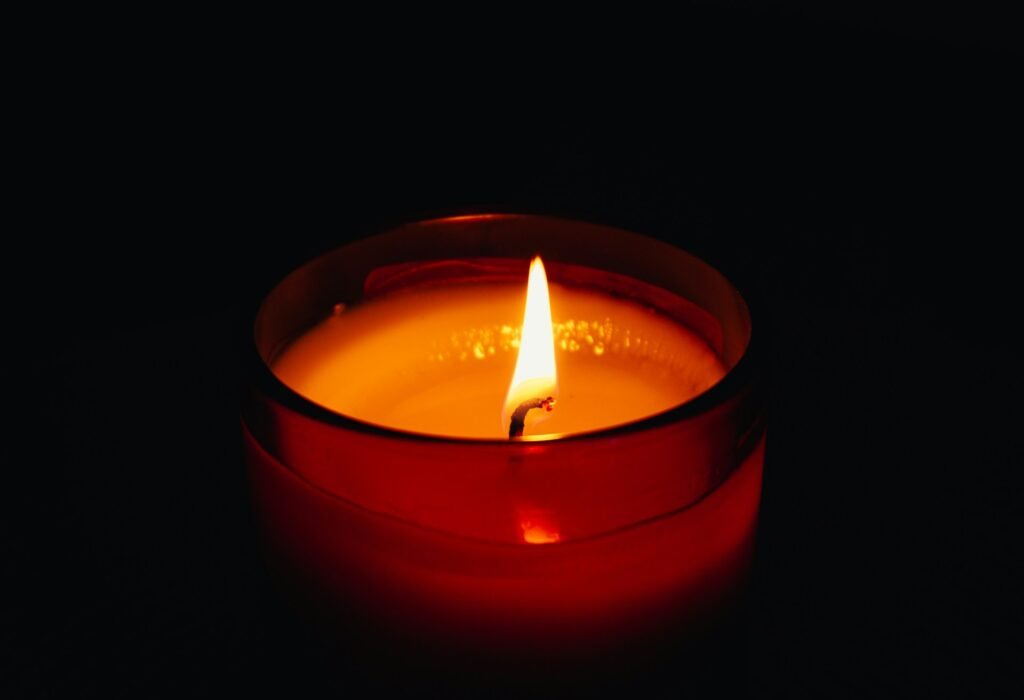
However, warm light can sometimes make it harder to see fine details clearly, and it might not provide enough contrast for tasks that require precision or extended focus.
Cool Light Characteristics
Cool lighting excels at creating an energizing, productive environment. It enhances visibility, improves color accuracy, and helps maintain alertness during long work sessions. The crisp, white light is ideal for detailed tasks, reading, and any activity that requires sustained concentration.

The downside? Cool light can feel harsh or sterile in certain settings, and using it too late in the day can disrupt your sleep schedule by suppressing melatonin production.
Warm vs Cool LED Lights: A Comparison
| Feature | Warm Light (2700K-3000K) | Cool Light (4000K-6500K) |
|---|---|---|
| Best for | Relaxation, creative work, evening use | Focus, detailed tasks, daytime productivity |
| Mood effect | Cozy, comfortable, intimate | Energizing, alert, professional |
| Eye strain | Lower during evening hours | Higher during extended use |
| Sleep impact | Minimal disruption | Can interfere with sleep if used late |
| Color accuracy | Warmer tones emphasized | Better overall color representation |
| Ideal spaces | Living rooms, bedrooms, dining areas | Offices, workshops, task areas |
| Recommendation that covers both (Amazon) | Airlonv LED Desk Lamp | Airlonv LED Desk Lamp |
Finding Your Perfect Lighting Match
The difference between cool and warm LED lights becomes most apparent when you consider your specific needs and usage patterns. Here’s how to think about it:
For most desk setups, you’ll want to consider when and how you use your workspace. If you’re primarily working during daylight hours on tasks that require focus and attention to detail, cool light will be your best friend.
But if your workspace doubles as a relaxation area in the evenings, or if you do a lot of creative work that benefits from a more relaxed atmosphere, warm light might be the better choice.
The Mixed Lighting Approach: Why Not Both?
Here’s a game-changer: you don’t have to choose just one. Many modern LED systems offer adjustable color temperatures, allowing you to switch between warm and cool light based on the time of day or your current activity.
This flexibility is particularly valuable for desk setups where you might need focused, cool light for detailed work during the day, but prefer warmer light for evening reading or casual computer use. Some advanced USB hubs even include integrated lighting controls, making it easy to adjust your workspace lighting without additional devices.
Common Lighting Mistakes to Avoid
One of the biggest mistakes people make is choosing lighting based solely on appearance rather than function. That trendy cool white LED strip might look sleek, but if it’s making you feel wired at 10 PM, it’s not the right choice for your bedside reading nook.
Another common error is using the same light temperature throughout your entire space. Different areas serve different purposes, and your lighting should reflect that. Your focused work area might benefit from cool light, while your break area could use something warmer and more relaxing.
Optimizing Your Workspace Lighting Setup
When setting up your desk lighting, consider creating zones with different light temperatures. Your main task light should match your work requirements, but ambient lighting can provide balance and reduce eye strain.
Think about glare, too. Cool light can be particularly harsh when it reflects off screens or glossy surfaces. Positioning your lights correctly and using diffusers can help create a more comfortable working environment regardless of the color temperature you choose.
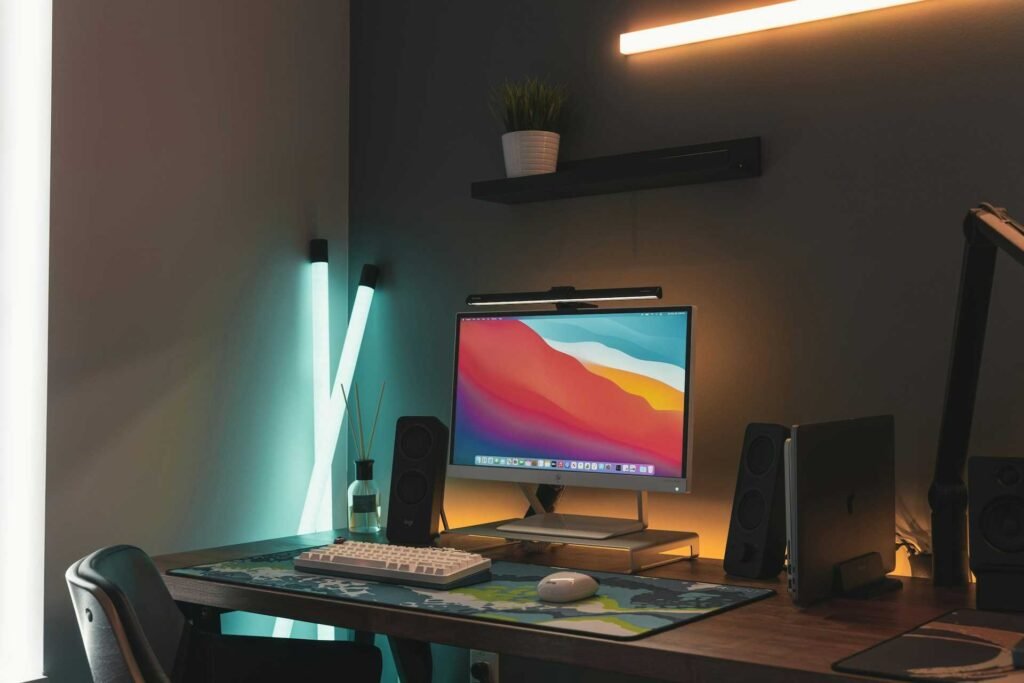
The Health Factor: How Light Affects Your Well-being
The impact of lighting on your health goes beyond just eye strain. Exposure to the wrong type of light at the wrong time can affect your mood, energy levels, and even your appetite. Cool light exposure during the day can help regulate your circadian rhythm and improve your overall sleep quality at night.
Conversely, using warm light in the evening helps signal to your body that it’s time to start winding down, leading to better sleep quality and more natural wake-up times. To fine-tune brightness and comfort, you might also consider a dimmable LED desk lamp.
FAQ
What’s the main difference between cool light and warm light?
The main difference lies in color temperature. Cool light (4000K-6500K) produces a white or bluish light that promotes alertness and focus, while warm light (2700K-3000K) creates a yellowish glow that encourages relaxation and comfort.
Is warm or cool light better for working?
Cool light is generally better for focused work tasks because it enhances alertness and improves visibility. However, warm light can be beneficial for creative work or when you need to maintain a relaxed atmosphere.
Can the wrong lighting affect my sleep?
Absolutely. Cool light suppresses melatonin production, which can make it harder to fall asleep if used too late in the day. Warm light has minimal impact on your sleep cycle and is better for evening use.
Should I use the same light temperature throughout my home?
No, different areas serve different purposes and should be lit accordingly. Use cool light in workspaces and areas where you need to stay alert, and warm light in relaxation areas like bedrooms and living rooms.
Do LED lights consume different amounts of energy based on color temperature?
Generally, no. The energy consumption of LED lights depends more on their wattage and efficiency rather than their color temperature. Both warm and cool LEDs can be equally energy-efficient.
Conclusion
The difference between cool light and warm light isn’t just about creating a pretty space, it’s about optimizing your environment for whatever you’re trying to accomplish. Whether you’re pulling an all-nighter on a important project or trying to create a cozy reading nook, the right lighting can make all the difference.
Remember, the best lighting setup is one that adapts to your needs throughout the day. Don’t be afraid to experiment with different combinations until you find what works best for your lifestyle and workspace. After all, good lighting is like a good cup of coffee, you might not always notice it when it’s perfect, but you’ll definitely feel the difference when it’s not quite right.
So go ahead, light up your life (literally), and create a space that not only looks great but actually helps you perform at your best. Your future productive self will thank you for it.
Looking for more? Check out our desk lighting category for more articles and guides that may interest you!
Featured image credit: Photo by Durmuş Kavcıoğlu on Unsplash
This content is for informational purposes only. Please verify current information directly on the retailer’s site before purchasing.

